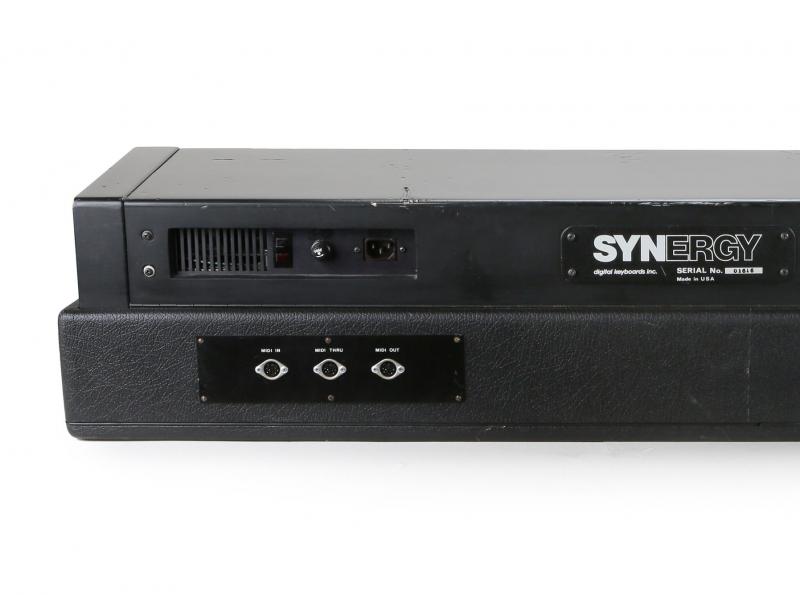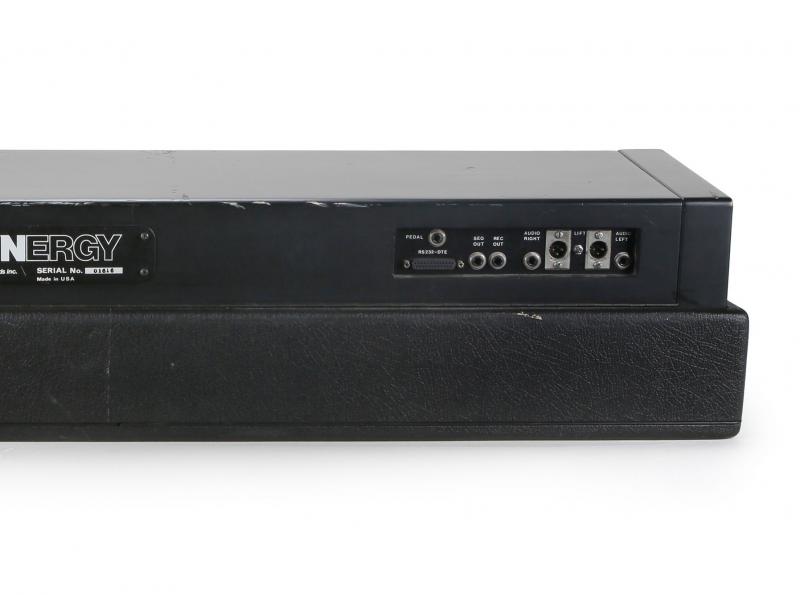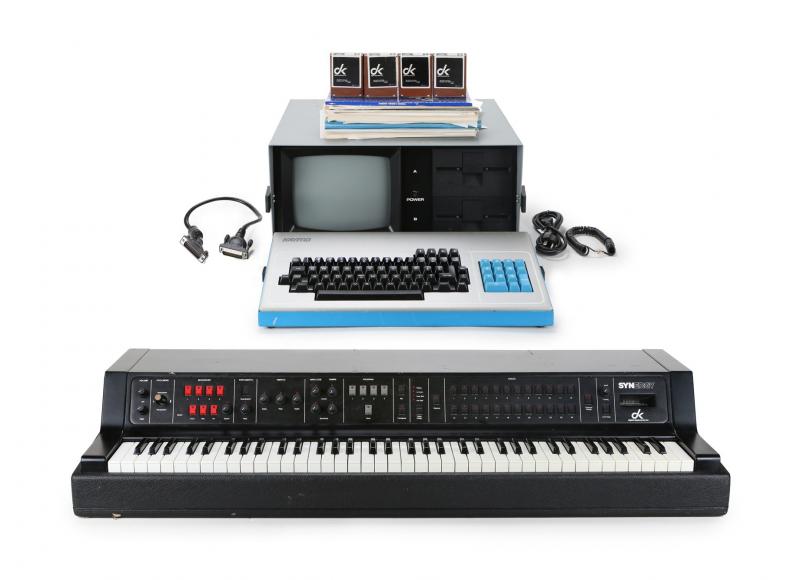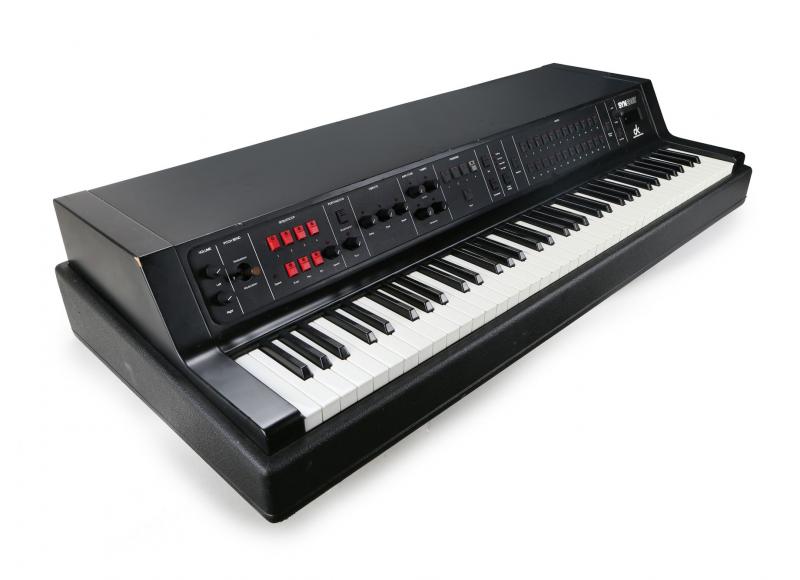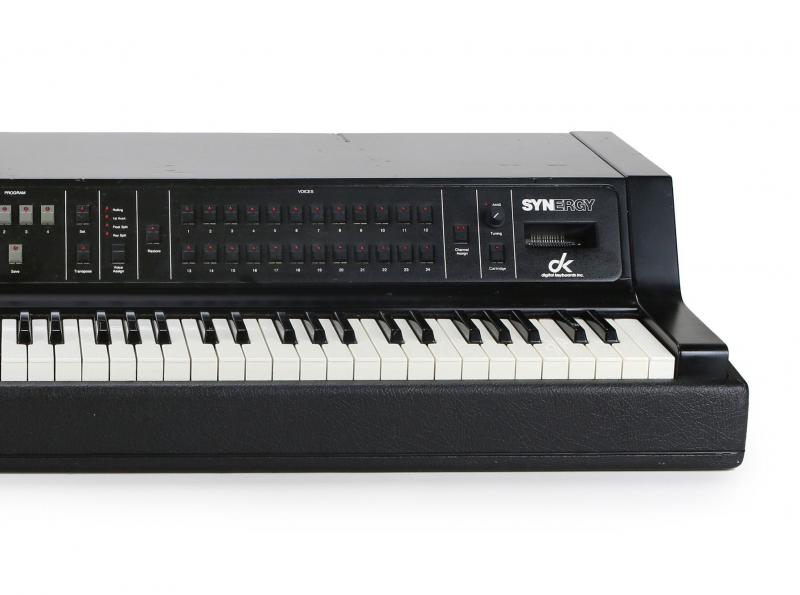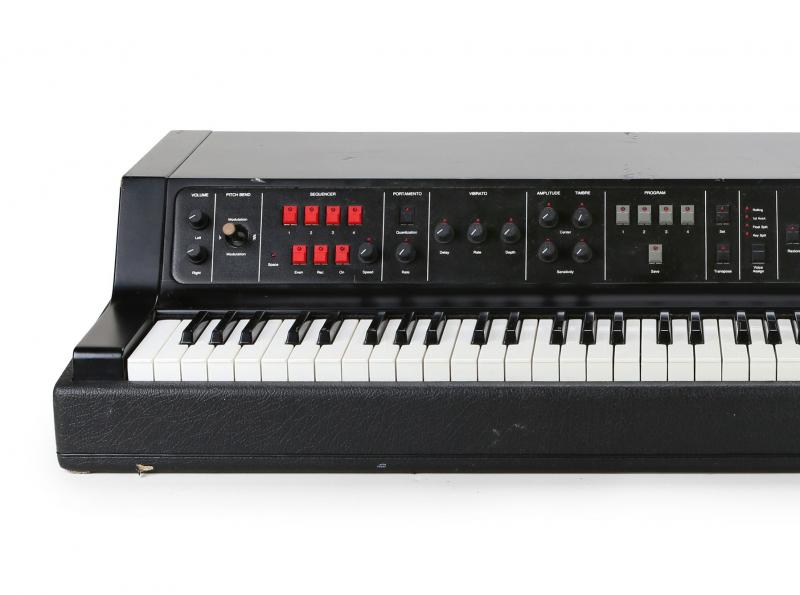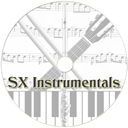Filter on ALL, SYNTH, DRUM, SAMPLER or MISC |
Total list currently 2405 items in 330 Brands |
DKI | Synergy |
Description | The Synergy is a digital additive synthesizer manufactured from 1982 to 1985. Of the approximately 700 to 800 that were produced, it is estimated that less than 100 may still be in operation today. In the 1970's, Bell Laboratories developed a high-speed additive oscillator system which was used by Digital Keyboards, a US-based division of the Italian synth/organ maker Crumar, to create a sophisticated additive synthesizer known as the Crumar General Development System (GDS). The GDS originally sold for about $27,500. The Synergy was essentially a lower-cost version of the GDS, without all the programmability of the GDS, and a price tag closer to $5,300. After a few years of production, DKI and the Synergy were shut down. However, the technology in the Synergy was ported over to a new instrument known as the Mulogix Slave 32, a rack-mount MIDI-equipped version of the Synergy, and was produced until 1989. Although the Synergy is not programmable, it does feature 24 tone presets (with many more available via 24-tone cartridges). The sounds are generated by additive synthesis and phase modulation using 32 digital oscillators, computer controlled, and allocated dynamically. Polyphony is variable, depending on the selected tone preset. Typically the Synergy is eight-voice polyphonic with four oscillators being used per voice. However, some tones may use only two oscillators per voice, allowing up to 16-voice polyphony. The Synergy can also play up to four different tone presets simultaneously, a very unique feature for its time. These tones could be assigned to the keys of the keyboard in a number of different ways, such as in unison, rotating (each new note triggers the next tone), first-available, fixed-split, and a unique floating-split mode in which a tone tracks the movement of a hand, thereby not limiting the player to the confines of traditional fixed-split keyboard conventions. The Synergy also features a four-track sequencer. The sequencer can record in real-time, allows for overdubbing, as well as the ability to play free on top of your recorded sequence. Up to 1,860 notes can be recorded. The Synergy has very flexible envelopes as well. The envelopes have up to 16 stages per oscillator for both amplitude and frequency, with multiple rates and breakpoints, and they are loop-able. The keyboard is a large 74-note affair with velocity sensitivity. The keyboard velocity controls both the amplitude and timbre of the tone via a pair of sensitivity controls that can be used to dial in the amount of amplitude or timbre you want affected. The timbre control affects the filter/brightness or the effect of a sound (ie: delay), depending on the tone preset. A joystick is used, somewhat oddly situated on the left front panel, to control the programmable pitch-bend and vibrato modulation. An intelligent portamento effect is on-board as well, that can produce portamento glides polyphonically, allowing for multiple sliding notes at the same time. The Synergy has eight user-memory slots for storing the setup of the keyboard playing state. The depth, rate and amount of vibrato available to the joystick can be stored, as well as the speed and type of portamento selected, transposition of the keyboard, velocity sensitivity settings, and mono/polyphonic modes. Sequencer data, however, is volatile and will be lost when turned off. Even without the ability to program the sounds of the Synergy, its responsive keyboard and flexible envelope features make for a very expressive instrument. The preset tones can reproduce acoustic instruments such as pianos and strings with great realism and clarity. But FM-type sounds and other digital synth timbres are also on tap. The looping envelopes and sequencer can also be used to create eerie textures, and swirling, morphing drones and pads with plenty of complexity. It was the Yamaha DX7 that did the Synergy in, at the end. The DX7 was capable of creating many similar types of sounds, but was at the same time, totally programmable and cost three times less. The Synergy has been used by W. Carlos (and used almost exclusively on the albums Digital Moonscapes and Beauty in the Beast). Carlos also used the GDS, which was used on the TRON soundtrack. Carlos signed on to create timbres for the Synergy, and eventually 22 different banks of 24 voices were created for the Synergy, for a total of 524 Synergy timbres. These timbres ran the full gamut from spacey digital sounds to chimes and gongs, to ethnic instruments like drums and xylophones and membranophones, to plucked and struck sounds, to brass and woodwinds, and rich strings and subtle keyboard timbres like the celesta and the vibraphone and the electric piano. |
| Brand | DKI |
| Model | Synergy |
| Device | Synth |
| Type | Keys |
| Engine Type | Digital |
| Engine | VA |
| Voices (max) | 16 |
| Multitimbral | 4 |
| Oscillators | 4 |
| LFO | Vibrato |
| Engine Detailed | 32 digital oscillators with sine and triangle waveforms |
| Envelope (VCA) | 16-stages, shapes amplitude and frequency |
| FX | Portamento |
| Memory | 24 Presets |
| Recording | 4-Track, 1860 note capacity, volatile, no editing, no external sync, individual track looping |
| Keys | 74 |
| Key type | Weighted keys |
| Velocity | Y |
| Aftertouch | No |
| Extra info | 24-tone cartridge expansion slot; 8 instrument settings |
| Produced: | 1982 - 1985 |
| Legend: | Obvious | Y: Yes, N: No, N/A: Not Applicable | |
| VCO | Voltage Controlled Oscillator | DCO | Digital Controlled Oscillator |
| LFO | Low Frequency Oscillator | Sub | Sub Oscillator |
| VCF | Voltage Controlled Filter | VCA | Voltage Controlled Amplifier |
| Velocity | As with a piano, the harder you hit a key, the louder the sound, unlike most organs which always produce the same loudness no matter how hard you hit a key. | Aftertouch | Pressing a key after you activated it. Channel Aftertouch, no matter which key, it will send a Channel message. Poly Aftertouch, sends the pressure per key instead of the whole channel. |
| Values for OSC, LFO, Filter, Envelope are per voice unless stated otherwise. | |||
